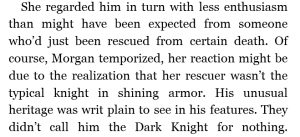Malcolm R. Campbell's Blog, page 200
September 28, 2015
Author of ‘Traitor Knight’ loves history when he gets to make it up

Willis
Today’s guest is Keith Willis, author of the new fantasy novel “Traitor Knight,” released by Champagne Books on September 7. You can learn more about the novel on its Facebook page.
Malcolm: Welcome to the Round Table, Keith. To keep things reasonably honest, I should confess that I was an English department instructor and you were a student some thirty years ago at Berry College. I wondered then what people did with a degree in English. You said on your website that when you graduated with a double major in English and French, you were best qualified for unemployment benefits. What were your expectations when you first entered college about your career? Somehow, I expected you’d be the editor of a literary magazine.
Keith: Thanks for having me on the Round Table, Malcolm. Where the heck did that 30 years go? Actually, in the interests of full disclosure, it’s closer to 40 years. But I won’t mention that if you won’t.
Malcolm: Keith, at our ages, it’s better to round numbers down rather than up.

This Berry College walkway is suitable for knights, real or imagined. – M. R. Campbell photo
Keith: I have to admit my career expectations on entering college were, not to put too fine a point on it, pretty non-existent. I would have loved to snag a job as editor of a literary magazine. Unfortunately supply far exceeds demand there, and the fact is the pay scale probably wouldn’t have cut it anyway. I had some vague ideas about becoming a teacher and even started the sequence for that in college—until the bottom dropped out of the teaching market.
I also had dreams of becoming an attorney, courtesy of way too many Perry Mason re-runs in my youth. But in the cold light of dawn, I knew that wasn’t realistic either, since I really hated public speaking. Thus, with a newly minted degree and a new wife I resorted, as do so many English majors, to “any port in a storm,” which in my case ended up being a career telling other people what to do (also known as Management). But at least the skills I learned at Berry allowed me to boss them around with clarity and conciseness.
Malcolm: A lot of new writers think everything that does into a novel involves sitting at a keyboard and typing. Not that we need a management spreadsheet here, but in terms of time and effort, how much of your work on Traitor Knight was writing vs. research, revising, editing, manuscript submission and planning a marketing strategy.
 Keith: I actually got the initial concept for Traitor Knight in October 2008, so almost exactly seven years ago. Once I started writing, it took me roughly fifteen months to produce a first draft (I was working full time as well, and didn’t devote a ton of time for writing). While I didn’t necessarily follow the dictum of “Write drunk, edit sober,” I will say that I just wanted to get a first draft down, and worry about fixing it afterwards.
Keith: I actually got the initial concept for Traitor Knight in October 2008, so almost exactly seven years ago. Once I started writing, it took me roughly fifteen months to produce a first draft (I was working full time as well, and didn’t devote a ton of time for writing). While I didn’t necessarily follow the dictum of “Write drunk, edit sober,” I will say that I just wanted to get a first draft down, and worry about fixing it afterwards.
The book actually started off much more in the romance genre, with a pretty high heat level, but I soon realized that really wasn’t what the story was all about. After reading over what I’d managed to write, I spent the next five years revising and re-writing and actually making it into a story that flowed and made sense. I found that I had lots of great scenes, but they didn’t actually all go together to drive the story forward.
Once I’d done some revisions I started feeling that this was pretty good stuff, and began sending queries to literary agents and editors. As most new authors do, I sent the manuscript out much too soon. Initial responses ranged from a polite “no thank you” to a nervous “why did you send me this ticking bomb draped in deadly cobras—please take it back”. It was honestly pretty awful. But each time I took any bit of feedback I could get, sat down and did another revision, and another, ad nauseum, to try and make the story more readable and attention-grabbing. It took six years and over 80 rejections (I kept a spreadsheet of them) before I snagged a publisher. But you just keep re-writing and revising until you catch the interest of that one individual who’s going to  say “Yes!” instead of “Go away.” And as I’m sure you’ve noticed in your own work, no matter how many times you revise and edit and tweak, even after it’s published you still see something that you think “oh, I really should have done this differently”.
say “Yes!” instead of “Go away.” And as I’m sure you’ve noticed in your own work, no matter how many times you revise and edit and tweak, even after it’s published you still see something that you think “oh, I really should have done this differently”.
Malcolm: What led you to write a knight on a quest fantasy, and did you know early on that your protagonist Morgan McRobbie might have been considered a bit of a loose cannon by Arthur, Lancelot, Galahad and the rest of the Round Table bunch?
Keith: The fantasy genre has always been something that resonated with me. One of my first favorite books was TH. White’s The Once and Future King, and I’m sure this had a lasting influence, as did Tolkien, and the SFF humorist Christopher Stasheff, whose The Warlock in Spite of Himself , filled with romance, adventure, and marvelously awful puns, helped me to see that the genre didn’t have to be quite so serious. Also, I think part of the attraction is that you get to make up your own rules, history, etc.
Malcolm: White’s novel was also one of my favorites.
Keith: When I first came up with the idea for Traitor Knight, I knew I wanted to do something a bit out of the ordinary—to turn the old ‘knight vs dragon’ trope on its head. So I ended up with a dragon suffering from hiccups and a damsel-in-distress who’s fiercely suspicious of her rescuer. The story is really more a swashbuckler with a large dash of wit, and is intended as an homage to all those great old Saturday matinee movies. And I came to realize that, even though Traitor Knight is classified as fantasy, the story relies less on the fantastical elements than in the interplay between Morgan and Marissa. Their characters owe a great deal to a couple of classic British writers: PG Wodehouse and Agatha Christie, who both wrote characters thrown into situations beyond their control and who face their challenges with aplomb and a sense of humor. My two leads clash, but they also engage in banter and barbs and their struggle, together and separately to save the kingdom from an insidious traitor, is what really drives the story.
Malcolm: Looking at this passage, I think Marissa expected a different kind of rescuer:
Keith: Morgan might well have been considered a loose cannon—although in the world I’ve created, cannon haven’t yet been invented—but he’s doing what he must, even at the risk of his honor, his happiness, and likely his life, to safeguard what he holds sacred. Morgan’s motto, as emblazoned on the family crest, translates to “As Need Requires”, and this is a major theme of the book, in that Morgan will do whatever is necessary, by whatever means come to hand, to accomplish his mission.
Malcolm: What kinds of reference materials or web sites did you use to nail down all the knights’ weapons/clothing, foods, customs, structures, horses and tack, viewpoints and customs that were all part of the time period in which the novel is set?

Champagne Books
Keith: The great thing about a story like mine is that you’re essentially starting with a blank slate. I tell people “I love history—especially when I get to make it all up”. I would have to say that most of my “research” was from reading heavily in the fantasy genre. I don’t go into a lot of descriptive details of armor, weaponry, etc. in the story. Instead I try to let the reader imagine what those things look like. I did have to come up with a system of magic, and figure out where the dragons came from—but as I mentioned earlier, I don’t really spend an inordinate amount of time going into the nitty gritty of this stuff. The story is really much more about the characters and their conflicts and desires. They just happen to live in a world where magic and dragons (and Dwarves, but we really don’t get to them until Vol. 2) exist.
Malcolm: So, your characters are campaigning for a sequel to Traitor Knight rather than allowing you to write with a different focus?
Keith: Rats! I guess I gave that answer away just now. There definitely is a sequel in the works., although Traitor Knight does actually stand alone. There’s no real cliffhanger that absolutely requires a second or third volume. My hope is more that readers will be engaged by the characters and want to read the next one just to see what they’re up to.
But I initially wrote books one and two as a single volume, then realized just how unwieldy that would be (somewhere in the neighborhood of 750 or so pages). I found a good stopping point for the first book and chopped ‘em in half. The second was pretty much done, but the editing and revisions I’ve ended up doing over the past couple of years have changed a lot of what happens in the sequel. My editor is urging me go get on with it and complete book two (tentatively titled Desperate Knights, and I am working trying to smooth out the rough edges and get all my dragons in a row.
Malcolm: If Hollywood calls you tomorrow to say they’re ramping up for a $100000000000 production of Traitor Knight, who would you pick to play Morgan McRobbie? Seriously, when you were writing, did you see the scenes in your mind’s eye the way they would look in “real life” or in a film?

A prospective Morgan McRobbie?
Keith: Morgan is actually bi-racial—his mother is from an island nation rather like Jamaica, where his father was dispatched on a diplomatic mission (they met while routing a band of particularly nasty pirates, but that’s another story—which I have, actually written). My choice to play Morgan would be Will Smith. I think he’s got the looks, the panache and the charisma to carry off the character. And yes, I did write the story not so much with a film in mind, but definitely from a cinematic perspective—I felt that if my writing evoked that type of visual sense, it would resonate more with readers.
Malcolm: Will Smith will work just fine. Thank you for stopping by the Round Table, Keith. Readers will find Traitor Knight on Kindle
You may also like: Briefly Noted: ‘Traitor Knight” by Keith Willis


September 25, 2015
Thanks for the editors
At this very moment, an editor is going over the manuscript for Thomas-Jacobs Publishing’s re-release of my contemporary fantasy Sarabande. I’m glad she is. She sees what I cannot see along with inconsistencies and goofs I wouldn’t recognize if I did see them.

Note: none of my editors look like this.
I could blame my cataract surgery for making my right eye see so much better than I need new glasses to read the words on the screen. (My old glasses are now too strong.)
However, if my editor sees this post, she can remind me (and all of you) that I was overlooking a lot of typos before the surgery.
Sometimes my wife reads over things I’ve written that I think are error free. Nope. She was a newspaper editor so she catches a lot of stuff.
So does my publisher, but she likes to check and double-check, so an editor reads my stuff after she reads my stuff. It must be a fact of life that a writer can go over his or her work a hundred times and guess what? It’s still waiting for the editor’s red pen.
Unfortunately, the red pen is gone. My wife and I are old school: we grew up editing copy (news copy) on a double spaced printout. I find more errors this way than I do when looking for typos and missing punctuation on the screen. I have to admit that Word’s Revision/Markup makes it easy for publishers and editors and writers to communicate over time about manuscript corrections.
But I still prefer edits on paper. My eyes are attuned to the page rather than the screen. Even so, I miss a lot. You probably do, too, whether you edit on the screen or print out a hard copy and look for your favorite pencil.
That’s why I firmly believe everything should go through an editor even though it’s not always easy to arrange this in today’s Kindle Direct Publishing world. If your spouse didn’t work for a newspaper, at least get your pets to review everything before you hit the “Save and Publish” button.
Thanks Lesa (wife), Smoky (editor) and Melinda (publisher).
–Malcolm
 Malcolm R. Campbell is the author of “The Sun Singer,” a contemporary fantasy that is currently on sale on Kindle.
Malcolm R. Campbell is the author of “The Sun Singer,” a contemporary fantasy that is currently on sale on Kindle.


September 21, 2015
Your shimmering, star-spangled crystal-colored world

Large Magellanic Cloud. NASA/ESA image
Johannes Eriunega, an Irish theologian and philosopher who lived in the 800s, said, “All that is, is light.” Niels Bohr (1885-1962), a Danish theoretical physicist who developed the foundation mathematics for Quantum Mechanics, said, “Everything we call real is made of things that cannot be regarded as real.”
In between the 800s and today, sages and physicists have said many things about the illusory nature of the reality we perceive with our physical senses. Goodness knows, those of us whose writing is characterized variously as science fiction, fantasy, or magical realism have put our spin on the large gap between consensual reality and the actuality behind the veil.
I used the NASA photo above in the header of my Facebook author’s page because it not only fits the fiction of a writer of fantasy and magical realism, but defines the belief behind my stories. I am not only a star gazer, but am also graced with occasional glimpses of our shimmering, star-spangled crystal-colored world as it actually is.
 You can be, too, if you haven’t already discovered that the vision of the Large Magellanic Cloud in the NASA photograph–or the night sky when the gods allow you to see it without interference from man-made light–is very much the same as an atomistic view of a rock or a person or a table, play with the exercise below.
You can be, too, if you haven’t already discovered that the vision of the Large Magellanic Cloud in the NASA photograph–or the night sky when the gods allow you to see it without interference from man-made light–is very much the same as an atomistic view of a rock or a person or a table, play with the exercise below.
Matter is mostly empty space. When I was young and still an adamant believer in a materialistic view of matter and logic, a minister at an alternative church told me that there’s no such thing as matter. What we believed was solid, wasn’t really solid. While he was a good friend, I thought his view was absurd.
Now that I’m the age he was when he told me that, I meet with the same “are you off your rocker” comments when I say he was right.
 We need our physical senses to navigate the world as we believe it to be. If your physical eyes showed you a Magellanic Cloud in front of your face, it would be impossible for you to function. However, with a bit of practice, you can see that the structure of the table in your room or the mountain outside your window–at their basic levels–looks like that cloud.
We need our physical senses to navigate the world as we believe it to be. If your physical eyes showed you a Magellanic Cloud in front of your face, it would be impossible for you to function. However, with a bit of practice, you can see that the structure of the table in your room or the mountain outside your window–at their basic levels–looks like that cloud.
Instead of taking a journey from the Earth to the Moon, you’ll be taking a journey from the illusory world of “physical matter” to the actual star-spangled realm inside the world your physical eyes have convinced you is there.
Unlike the law of attraction and other practices that require you to believe they’ll work before your experience tells you they’ll work, you can see the stars inside your table without having to be certain there are stars inside your table.
Sit in a comfortable chair and stare at your table and consider what it might be like to shrink yourself to a creature much smaller than an electron and fly over, under and through that table. How would it appear?
Relax and then silence the constant chatter in your mind about the chores waiting for you, what you had for dinner yesterday, and everything else your inner dialogue is constantly focused upon.
Close your eyes and imagine you will soon become an a very small firefly sitting on the back of your chair.
 If you don’t already have a preferred meditation technique, you can use a modified form of self-hypnosis or a biofeedback process to reduce the frequency of your brainwaves and slow down your pulse rate.
If you don’t already have a preferred meditation technique, you can use a modified form of self-hypnosis or a biofeedback process to reduce the frequency of your brainwaves and slow down your pulse rate.Think to yourself, “I am going to a deeper level of consciousness, 10…9…deeper and deeper…8…7…6…with each descending number I am deeper than before. . .5…4…3…deeper. . .2…1…I am now at a deeper, healthier level of consciousness.” You can vary the words you think depending on what makes you the most relaxed.
With your eyes closed, pretend you’re a very tiny firefly. Imagine yourself flying around the room to take a look at the objects in it. What do the chairs, curtains, books, TV set, and pictures on the wall look like from this perspective?
Once you’ve explored the room, consider the table. Fly around it and see what it looks like from all sides. When you are ready, think something like the following, “I’ about to fly inside the table.”
Fly up to it and stare at its “surface,” just covering there. While doing this, imagine that it’s an impressionist painter’s table, composed of flickers of paint and light. See it growing larger the way a JPG grows larger when you increase its size slowly to the point where the pixels get farther and farther apart.
Now, when the table is so large that it’s component “pixels” are so far apart you can easily fit between them. fly inside it. How does it feel? What do the different “colors” of the table appear to be when you examine them closely?
Hover in place and until everything you see appears like the night sky, shimmering and crystal colored and radiant.
Assuming you haven’t fallen asleep, fly outside the table and–in your firefly form–sit or stand on the chair you chose before you did your meditation countdown.
Think to yourself, “At the count of three, I’ll awake into my everyday reality feeling happier and healthier than before…1…2…3.” Open your eyes.
 The first time I successfully did this journey, I stood up too soon and as I took my first step away from the chair, I fell. Why? The floor wasn’t there. I was still seeing things with my firefly’s eyes. So wait there a moment and make sure everything looks “normal” before you leave your chair.
The first time I successfully did this journey, I stood up too soon and as I took my first step away from the chair, I fell. Why? The floor wasn’t there. I was still seeing things with my firefly’s eyes. So wait there a moment and make sure everything looks “normal” before you leave your chair.
Does this journey work the first time? I can’t say. Does one “see” more clearly each time they do it? I can’t say, because it’s better if you have no preconceived ideas about whether of not this exercise is easy or difficult or whether or not it takes practice or it doesn’t.
Becoming a sparkling firefly and fluttering around the living room requires a sense of play. Or, if you don’t like flying, become an ant (or whatever you prefer). This is a game of “let’s pretend” that should be relaxing in and of itself. Have fun. Sooner or later, you will realize that your let’s pretend has become real at a deeper level of consciousness.
–Malcolm
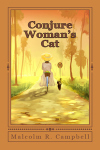 Malcolm R. Campbell is the author of the magical realism novella “Conjure Woman’s Cat.”
Malcolm R. Campbell is the author of the magical realism novella “Conjure Woman’s Cat.”


September 18, 2015
You may live in Wiregrass Country and not know it
By and large, people have forgotten wiregrass. Time was, it occupied the forest floor where longleaf pines grew. Sadly, most of the longleaf pine forest is gone as well.

Wikipedia photo
The deep South is wiregrass country and for those who remember, there’s a lot of folklore in and around those old woods. “Progress” killed the longleaf pines. And, wiregrass, too. (Some people call it “Pineland Three-awn.”)
Like longleaf pines, wiregrass needs fire to prosper. Native Americans in the Florida Panhandle and south Georgia knew this and so did incoming settlers. They burned off the grass yearly. This helped the forest by clearing out all the understory clutter of brush that choked pines and pine seedlings. The grass, which returned soon after the burns, came up fresh and new and was succulent enough for cattle for a while before getting wiry and inedible.
In some ways, Smoky the Bear helped kill off our wiregrass and longleaf pine forests because he kept brainwashing us with the phrase “Only You Can Prevent Forest Fires.”
But here’s the thing: forest fires are a natural part of environmental renewal. Preventing them where they are needed harms the forest. In the 1940s, the forest service banned controlled burning and we have been paying for that mistake ever since even though the practice is now more in favor.
 In Wiregrass Country, one of my favorite folklore books about the world where I grew up, Jerrilyn McGregory writes that “Wiregrass (Aristida stricta) depends on fire ecology to germinate. Its fire ecosystem created a unique set of circumstances, tied closely to a way of life…Although it was once the most significant associate in a community of species that formed the piney woods, many human inhabitants of the region have lived and died without knowing the plant.”
In Wiregrass Country, one of my favorite folklore books about the world where I grew up, Jerrilyn McGregory writes that “Wiregrass (Aristida stricta) depends on fire ecology to germinate. Its fire ecosystem created a unique set of circumstances, tied closely to a way of life…Although it was once the most significant associate in a community of species that formed the piney woods, many human inhabitants of the region have lived and died without knowing the plant.”
I grew up with wiregrass and longleaf pines and miss them. Perhaps that’s why I’m working on another novel set in “Wiregrass Country.” Maybe talking about wiregrass and pines will remind people what we once had and will help garner support for restoration efforts.
Traditions in Wiregrass Country run deep even though they often seem out of place in an increasingly “citified” world. If you grew up there, you probably ate mullet, went to peanut festivals and rattlesnake roundups, knew well the “shape note” old-style hymns of Sacred Harp music, fished or played a rousing game of fireball and loved storytellers.
If you didn’t grow up there, you missed a lot. Same goes if you grew up there in a suburban neighborhood and never ventured out into the piney woods and small towns.
Maybe it’s time to go see what it’s all about.
–Malcolm
 Malcolm R. Campbell’s “Conjure Woman’s Cat” is a magical realism novella set in the wiregrass and piney woods country of the Florida Panhandle.
Malcolm R. Campbell’s “Conjure Woman’s Cat” is a magical realism novella set in the wiregrass and piney woods country of the Florida Panhandle.


September 12, 2015
Writers’ experiences turn into stories
While most fiction is not factually true, it contains bits and pieces of the author’s experiences. Those pieces are usually well disguised, meaning that they probably aren’t recognizable to readers who were there when they happened.

Many Glacier Hotel appeared in “The Sun Singer,” “The Seeker” and “Emily’s Stories.”
Long-time readers of this blog know, for example, that my novel The Sun Singer takes its name from the sun singer statue in Allerton Park, Illinois. Like my protagonist, I saw that statue and felt a psychic connection to it when I was a child. The novel is set in Glacier National Park where I worked as a seasonal employee.
Some of my experiences in the mental health field made their way into my Kindle short story ‘Moonlight and Ghosts,” things that happened in and around me while I was growing up in Florida ended up in my novella Conjure Woman’s Cat, and experiences aboard an aircraft carrier ended up in my novel The Sailor. So did my experiences in a sailor town bar, written about in the post I Knew Suzie Wong.
I’m certain that most writers do this. Usually, it’s nothing earth shaking like being a spy and then writing a novel about being a spy.

Most people went to the park for the beach. Even so, most of the park was woods and high grass.
For example, when I lived in the small town of Zion, Illinois on the shore of Lake Michigan, we heard on the local news that two kids were missing in Illinois Beach State Park. My landlord and I joined many other volunteers and swept through many areas of the park in long lines of people.
We found nothing. Later, the teams split up and many went home, but Brian and I continued to look. We drove up to the main staging area late in the evening and found out that both children were dead, having drowned in a small lake.
This had a huge impact on me, though I never knew until now how to put it into a story. Now, bits and pieces of it are appearing in my work in progress.
Personal experiences are such a treasure trove to the novelist, for s/he not only has the factual details, but the emotional highs and lows s/he and others felt while the real life moments were unfolding.
Almost everything I write has a personal component: a re-purposed experience, a character who has traits in common with a real person I knew, or a setting I know well. Yet none of my stories are historically true because everything is turned upside down and inside out before it gets to the printed page.
But they are all true in spirit.
–Malcolm
 Malcolm R. Campbell is the author of “Conjure Woman’s Cat,” a novella with a character named Eulalie who has traits in common with a real-life lady named Flora.
Malcolm R. Campbell is the author of “Conjure Woman’s Cat,” a novella with a character named Eulalie who has traits in common with a real-life lady named Flora.


September 10, 2015
Sea of Grass
Sea of Grass was a 1936 Conrad Richter novel about the cattlemen vs. the homesteaders on prairie land referred to as a “sea of grass.” Katharine Hepburn, Spencer Tracy and Melvyn Douglas starred in the 1947 Elias Kazan film based on the novel.
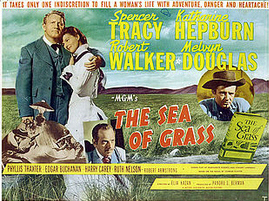 Even though I saw this movie a long time ago, I think of it when the “yard” gets out of control. I put that word in quotation marks because when you live on a section of a farm, yard grass tends to run into general non-yard grass along the roadway, between the out buildings, and into other seemingly huge expanses green stuff between the house and the fence.
Even though I saw this movie a long time ago, I think of it when the “yard” gets out of control. I put that word in quotation marks because when you live on a section of a farm, yard grass tends to run into general non-yard grass along the roadway, between the out buildings, and into other seemingly huge expanses green stuff between the house and the fence.
The plan is for the cattle to stay on the other side of the fence. We’ve talked about the getting several goats to help tend to the grass on this side of the fence. More trees, too, so that there are vast areas natural ground cover rather than the grass.
The problem with the grass, other than the fact there’s a lot of it, is that, say, on a Monday it looks pretty good. Then there’s a monsoon on Tuesday and Wednesday. On Friday, the grass is suddenly several feet high and that’s a chore even for the riding mower.
I’m generally a fan of prairie and am fascinated by the tenacity of the grass with it’s long root systems searching for moisture during dry periods. Mowing that grass is another thing. There’s an old Ford tractor (still runs) sitting in one of the out buildings and we’re really tempted to buy a bush hog for it so we can reduce a day-long mowing adventure down to a half-day adventure.

On the Christmas list!
Frankly, I think the neighbors sneak over here at night and throw 10-10-10 fertilizer in all the yard and non-yard miniature prairie habitats so that when we get up in the morning still tired from mowing the day before, the grass looks again like it hasn’t been cut in weeks.
The neighbor on the other side of the fence who leased and then bought the majority of our old farm, suggests that we bale our into large rolls so he can put it in the barn to dry for his cattle. Interesting idea.
My wife mowed for two hours after dinner last night. I mowed for two hours this afternoon after the grass finally dried out enough from last night’s rain. Grass (not marijuana) doesn’t make for a very philosophical or celestial post. It’s more something to do while I’m cooling off from our sea of grass.
There’s more to mow, of course. While mowing, the yard seems about the size of the Tallgrass Prairie Preserve in Kansas:
There used to be 170 million acres of tallgrass prairie in the U.S. Now, about 96% of it’s gone. Somebody obviously loaded up some of that 96% and brought it down to north Georgia during a night with no moon so I would have to cut it.
If you just bought yourself a brand new riding mower and then realized you don’t have a yard, feel free to bring it out to our place. We’ll even give you a free beer when you’re done unless you run over the shrubs or tear off a section of the back porch.
–Malcolm
 Malcolm R. Campbell is the author of “Conjure Woman’s Cat,” a granny-vs-the-KKK novella set in the Jim Crow era of the Florida Panhandle. The Kindle edition is on sale for 99 cents today (9/10) and tomorrow (9/11).
Malcolm R. Campbell is the author of “Conjure Woman’s Cat,” a granny-vs-the-KKK novella set in the Jim Crow era of the Florida Panhandle. The Kindle edition is on sale for 99 cents today (9/10) and tomorrow (9/11).


September 6, 2015
Memories of that First Cat
When I was a kid, I read The Hound of the Baskervilles and immediately became a “dog person.” I imagined becoming a famous writer who would live on an immense estate protected by supernatural and potentially unfriendly deer hounds.
 My fiancée informed me I was going to become a “cat person.” Other than the expedient fact that she was a cat person, the practicalities of the matter were that large hounds don’t fit well in apartments. They need, if not moors, large yards.
My fiancée informed me I was going to become a “cat person.” Other than the expedient fact that she was a cat person, the practicalities of the matter were that large hounds don’t fit well in apartments. They need, if not moors, large yards.
In 1978, Needles became our cat because (a) a friend’s cat had a litter and the friend didn’t need more cats, and (b) the cat would prove one way or the other if I was “marriage material.” Needles got his name because he had sharp claws and, of all of our cats over the years, his temperament was probably the closest to the hound of the Baskervilles.
I could tell stories, but this is a family blog.
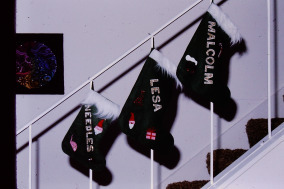 Needles lived a long and adventurous life in Georgia, from Rome to Marietta to Smyrna to Norcross. When he crossed the rainbow bridge he was ancient. His final resting place is the farm where we now live just outside of Rome.
Needles lived a long and adventurous life in Georgia, from Rome to Marietta to Smyrna to Norcross. When he crossed the rainbow bridge he was ancient. His final resting place is the farm where we now live just outside of Rome.
My wife likes to tell people that when Needles first arrived in our lives, I had a “what the hell do I do with that thing” kind of attitude. In my defense, I didn’t know nothing about no cats and didn’t know what they wanted or why they randomly freaked out and clawed the hell out of my arms. They’re possessed, I think, by random malevolences that haunt most neighborhoods.
Needles liked his blanket. He thought that no matter what infraction he committed (such as grabbing my ankle when I walked through a dark room), he was free and clear if he could just get back to that blanket. It was like home plate or a safe house.
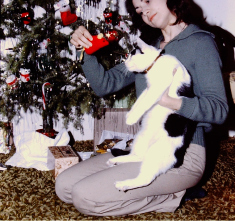
Lesa and Needles in 1979
We had a deck at the Norcross town home that got so hot on sunny afternoons, we couldn’t walk out there in bare feet. Needles could lie out there for hours. Go figure.
By then I had learned that cats sleep 16 hours or more a day and thought (a) what a life, and (b) that at least they couldn’t jump out of dark shadows while they were asleep.
Bottom line, Needles was a hoot and somehow with him I passed the test and my fiancée and I were married in a small ceremony in the living room of the friend who gave us our first cat.
My only regret is that saying “release the cats” doesn’t sound as cool as saying “release the hounds.”
–Malcolm
 Malcolm R. Campbell learned enough from Needles, Black Kitty, Orange Kitty, Marlo, Duncan and Katy to write a novella with a cat as a major character: “Conjure Woman’s Cat.”
Malcolm R. Campbell learned enough from Needles, Black Kitty, Orange Kitty, Marlo, Duncan and Katy to write a novella with a cat as a major character: “Conjure Woman’s Cat.”


September 4, 2015
New Presidential Candidate to out-trump Trump
Junction City, TX – Star-Gazer News Service – Local author Caine Molasses, whose recent bestseller Grits on the Half Shell has been banned from schools across the country, announced his candidacy for the Presidency today from an Albino County jail where he’s serving time for skipping 25 straight alimony payments to his former wife Sue “Sugar Beet” Hawkins who, with her sister Sadie, runs a dance studio on the other side of the tracks.

Sweeter than Grandma
Warden Bill Smith, who introduced Molasses to the prison exercise yard news conference, said that since the author had been a model prisoner, he would make a wonderful President.
“My campaign is a blend of the worst ideas from this year’s crop of Presidential wannabees simply because those ideas get the most publicity,” Molasses said.
His campaign manager Bugsy Baker, formerly of Chicago, said “even the dead will want to vote early and often for this man.
According to his campaign literature, Molasses will promote the following:
Carve up all the nation’s great banks into the chaos of tiny inefficient banks they used to be prior to all the mergers. Inefficiency means more jobs and more jobs mean more prosperity.
Build a Berlin-style wall along the border with Mexico at Mexico’s expense, complete with machine guns and a “Checkpoint Carlos.” Strengthen the war on drugs by sentencing users to do their time south of the wall until America is so drug free, the cartels will go out of business. We’ll be crime free by 2023.
Promote the concealment of all e-mails, letters, diplomatic packets, phone calls and texts from the American public who really have no business spying on their own government during sensitive negotiations with rogue governments, unruly Senators and Representatives, or rich people who are willing to kick in a few bucks for better government considerations.
Unleash Wall Street so that it can truly become the Las Vegas of the east. Let them do what they do best under an investor beware philosophy. Don’t get in the game if you can’t afford to lose your shirt.
There are a lot of countries out there who only respect force. Force is good for our military industrial complex because it means jobs for the common man and woman who screw bolts on new tanks and it means a larger military which means jobs for people who would otherwise be in jail or on the county or hoping Uncle Sam will pay their college tuition. We need an invasion every year or so to stay on top of our game.
Molasses, who has been married fifteen times, says “my love life is evidence I can sweet-talk anybody into my bed. That’s the first duty of a great President.”
Baker told reporters that he knew Molasses fight to get noticed would be an uphill battle since the major candidates are saying so many outlandish things, “they already have CNN or FOX news in bed with them.”
“When elected President,” said Molasses, “I’ll guarantee that every man, woman and child will receive the minimum daily requirement of Calcium, Iron, Magnesium, Manganese, Phosphorus, Potassium, Sodium, Zinc along with 14.74 g of carbs and 1.213 kcal of energy from the department of agriculture. After all, that’s what I’m made of.”
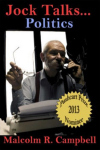 Story filed by Jock Stewart, Special Investigative Reporter
Story filed by Jock Stewart, Special Investigative Reporter


August 31, 2015
Where is Hong Kong’s Li Lai Ha Today?
In the Spring of 1969, Li Lai Ha came aboard the U.S.S. Ranger (CVA-61) compliments of the ship’s Marine Detachment (MARDET). I was there from the Public Affairs Office to take pictures.

Li Lai Ha and her grandmother with their Marine escorts. – Malcolm R. Campbell photo
A brief story of her visit appeared in the March issue of the “Shield,” Ranger’s shipboard magazine with a black and white photograph. Headlined “Girl With 61 Papas,” the story read as follows:
Li Lai Ha, a 13-year-old from Hong Kong, was adopted by Ranger’s Marine Detachment eight years ago after her escape from Red China. When Ranger visited Hong Kong last month, Lai Ha got a deluxe tour of the ship and was presented gifts of a stuffed dog, a jewelry box and a flash camera from her papas.
The photo that ran with the story shows her on the flight deck with her maternal grandmother, interpreter, and an imposing group of marines.
Since I left the ship for shore duty that fall, I heard nothing more about her or any subsequent visits. I have often wondered whether her association with the shipboard detachment enhanced her life or was more of a brief interlude.
The Ranger is gone and the Marines no longer station detachments onboard capital ships. So, if an historical archive exists that follows up on Li Lai Ha’s 1969 visit, I have no idea where it might be.
She would be about 59 or 60 right now. I wonder if what she remembers about that day and if she still lives in Kong Hong.
At the time, I thought she was a bit overwhelmed by all the attention as well as the ride from the pier out to the carrier’s anchorage in the harbor. I was older than her and a bit overwhelmed by my visit to Hong Kong.
This is one of those memories that stayed with me and was a bit haunting.
–Malcolm


August 29, 2015
Mail Call – Are you sending mail?
“Carrier onboard delivery (COD) is the use of aircraft to ferry personnel, mail, supplies, and high-priority cargo, such as replacement parts, from shore bases to an aircraft carrier at sea. Several types of aircraft, including helicopters, have been used by navies in the COD role. The Grumman C-2 Greyhound has been the United States Navy’s primary COD aircraft since the mid-1960s.” – Wikipedia
On board ship, we heard an endless chatter of messages over the 1-MC “public address” system. We disliked “General Quarters” because it meant something bad was happening or we were going into another endless drill. We liked “Mail Call” because that meant messages from home, something perfume scented from a lover or spouse, something to eat from mom or grandmother such as pre-crushed cookies or flattened fruitcake.

C-1A Trader – USN Photo
While carrier onboard delivery refers to a service, we tended to refer to the mail plane itself as “the COD.” Launch and recovery operations were available on closed-circuit TV throughout the ship, so we often saw the COD land. We knew then it was a matter of time before we’d hear “Mail Call” announced.
I served onboard the USS Ranger during the Vietnam War and mail arrived via a C-2 Greyhound or the carrier’s smaller C-1 Trader. Both were made by Grumman. I liked the Trader best because we saw it the most. Plus, I flew off the ship in a Trader when I transferred to shore duty.

1-MC speaker
I have no idea what it was like to be “in-country” in a hostile environment and receive a letter. A treasure, it was, I imagine.
Those of us onboard ship outside the direct line of fire welcomed mail because it was a positive interruption in the daily grind during cruises that often took us away from home for nine months at a time. Word from home: nothing was more important.
Like many factory settings, a carrier was in many ways a dangerous place when you think of large equipment, stores of aviation gasoline and jet fuel, bombs and missiles, aircraft launch and recovery, and all the things that could possible go wrong. Mail Call was an oasis in this madness afloat. In fact, it reminded us of why we were putting up with the madness.

Ranger’s COD – Malcolm R. Campbell photo
Today, of course, sailors on board ship get e-mail and, as far as I know, Skype. So there’s a faster way to connect if folks will just remember to do it. Mail in 1968 took a long time to go to and from an aircraft carrier at sea. If we went for a while without letters, it took a long time to find out why. Today, one can send an e-mail with a header like “where are you?” or “everything okay?”
However your service man or woman gets to hear from you, I hope you’re sending snail mail and/or e-mail. I assume cookies are still in demand. Things you can hold in your hand are a change of pace from words and JPGs on the screen: a locket, a lock of hair, a color-crayon card from one of the kids, a pressed flower, a program from a play or recital, something you touched and took the time to put in an envelope with an APO or FPO address on the front.
COD is still important even in a world of e-mail and Skype. Keep in touch.
–Malcolm

Flight Deck – Malcolm R. Campbell photo
P.S. Most of you who served onboard the USS Ranger (CVA-61) know by now that the Navy dishonored all of us by selling the ship to a scrapper for a penny rather that turning it into a museum. It sits at the scrap yard now where cutting torches will do what time, storms, accidents and the enemy couldn’t accomplish.



